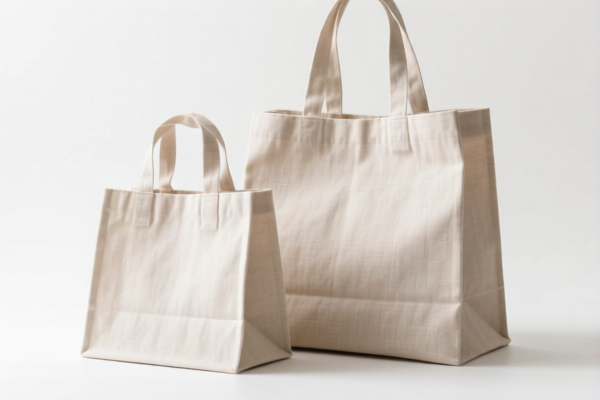| HS Code | Official Doc | Tariff Rate | Origin | Destination | Effective Date |
|---|---|---|---|---|---|
| 6305900000 | Doc | 43.7% | CN | US | 2025-05-12 |
| 4202921500 | Doc | 61.3% | CN | US | 2025-05-12 |
| 3923290000 | Doc | 58.0% | CN | US | 2025-05-12 |




CLOTH SHOPPING BAGS – HS Code Classification & Customs Guide
Based on the provided information, your "CLOTH SHOPPING BAGS" fall under several potential HS codes, depending on the specific material and construction. Here's a breakdown to help you determine the most accurate classification:
Understanding HS Codes:
The Harmonized System (HS) Code is a standardized international system of names and numbers to classify traded products. It's crucial for accurate customs declarations, duty assessment, and trade statistics. The first 6 digits are generally standardized globally, while the last digits can vary by country.
1. HS Code: 6305.90.00.00 – Sacks and bags, of a kind used for the packing of goods: Of other textile materials (899)
- 63: Textile articles not elsewhere specified or included. This chapter covers a wide range of textile products.
- 05: Linens and other woven textile fabrics; table linen, kitchen linen, toilet linen and similar textile fabrics.
- 90: Other textile materials. This indicates the bags are made from materials other than specifically listed textiles.
- 00.00: Further specifies the item within the category.
Applicability: This code is suitable if your shopping bags are primarily intended for packing goods (e.g., reusable grocery bags used to transport items from the store) and are made from textile materials other than cotton, linen, etc.
Tax Rate: * Basic Tariff: 6.2% * Additional Tariff: 7.5% * Total Tariff: 43.7% (Note: Additional tariff will change to 30% after April 2, 2025)
2. HS Code: 4202.92.15.00 – Trunks, suitcases, attache cases, briefcases, school satchels, spectacle cases, binocular cases, camera cases, musical instrument cases, gun cases, holsters and similar containers; traveling bags, insulated food or beverage bags, toiletry bags, knapsacks and backpacks, handbags, shopping bags, wallets, purses, map cases, cigarette cases, tobacco pouches, tool bags, sports bags, bottle cases, jewelry boxes, powder cases, cutlery cases and similar containers, of leather or of composition leather, of sheeting of plastics, of textile materials, of vulcanized fiber or of paperboard, or wholly or mainly covered with such materials or with paper: Other: With outer surface of sheeting of plastics or of textile materials: Travel, sports and similar bags: Of vegetable fibers and not of pile or tufted construction: Of cotton (369)
- 42: Articles of leather, travel goods, handbags, saddlery and harness. This chapter covers a broader range of bags and travel-related items.
- 02: Trunks, suitcases, briefcases, handbags, etc.
- 92: Other bags, including shopping bags.
- 15.00: Specifically for bags with an outer surface of textile materials, made of vegetable fibers (like cotton) and not pile or tufted construction.
Applicability: This code is best if your shopping bags are more akin to everyday carry bags (handbags, tote bags) and are made of cotton or other vegetable fibers. The "not of pile or tufted construction" is important – meaning the fabric isn't a plush or looped pile (like velvet or corduroy).
Tax Rate: * Basic Tariff: 6.3% * Additional Tariff: 25.0% * Total Tariff: 61.3% (Note: Additional tariff will change to 30% after April 2, 2025)
3. HS Code: 3923.29.00.00 – Articles for the conveyance or packing of goods, of plastics; stoppers, lids, caps and other closures, of plastics: Sacks and bags (including cones): Of other plastics
- 39: Plastics and articles thereof. This chapter covers products made from various types of plastics.
- 23: Articles for the conveyance or packing of goods, of plastics.
- 29: Sacks and bags (including cones) of other plastics.
Applicability: This code applies if your shopping bags are made primarily of plastic, even if they have some textile components.
Tax Rate: * Basic Tariff: 3.0% * Additional Tariff: 25.0% * Total Tariff: 58.0% (Note: Additional tariff will change to 30% after April 2, 2025)
Recommendations & Important Considerations:
- Material Composition: The primary material of your bags is the most important factor. If it's mostly plastic, use 3923.29.00.00. If it's mostly cotton, 4202.92.15.00 is likely best. If it's a blend or other textile, 6305.90.00.00 might be appropriate.
- Intended Use: Consider whether the bags are primarily for packing goods or for carrying goods.
- Construction: Pay attention to whether the fabric is pile or tufted.
- Single Invoice: If you have multiple types of bags on a single invoice, you may need to classify them separately.
- Certification: Depending on the destination country, you may need to provide certificates of origin or other documentation.
- Declare Accurately: Always declare the correct HS code to avoid delays and penalties.
- Consult with a Customs Broker: For complex cases or large shipments, it's best to consult with a licensed customs broker in the destination country. They can provide expert guidance and ensure compliance with all regulations.
Disclaimer: This information is for general guidance only and does not constitute professional legal or customs advice. Regulations can change, so it's essential to verify the latest requirements with the relevant customs authorities.
Customer Reviews
I'm so glad I found this site. The guidance on HS codes and tariff rates for cloth shopping bags was exactly what I needed for my business.
The information is good, but I wish there were more examples of how to determine the primary material of the bags. It was a bit unclear at first.
The tax rate breakdown for HS Code 3923.29.00.00 was clear and helpful. I'm exporting plastic shopping bags now, and this saved me time.
I was confused about which HS code to use for my cotton shopping bags. The explanation for 4202.92.15.00 helped me make the right choice.
This page made it easy to understand the difference between HS codes for plastic and textile shopping bags. Great resource for exporters.